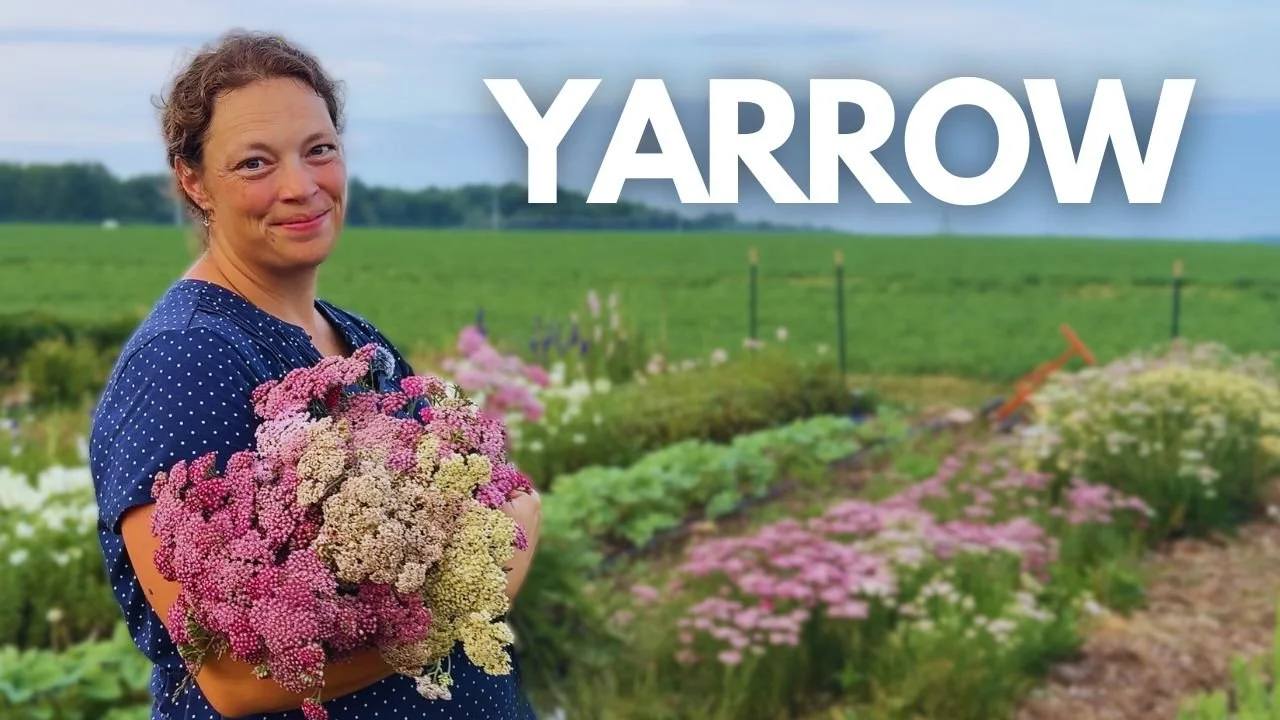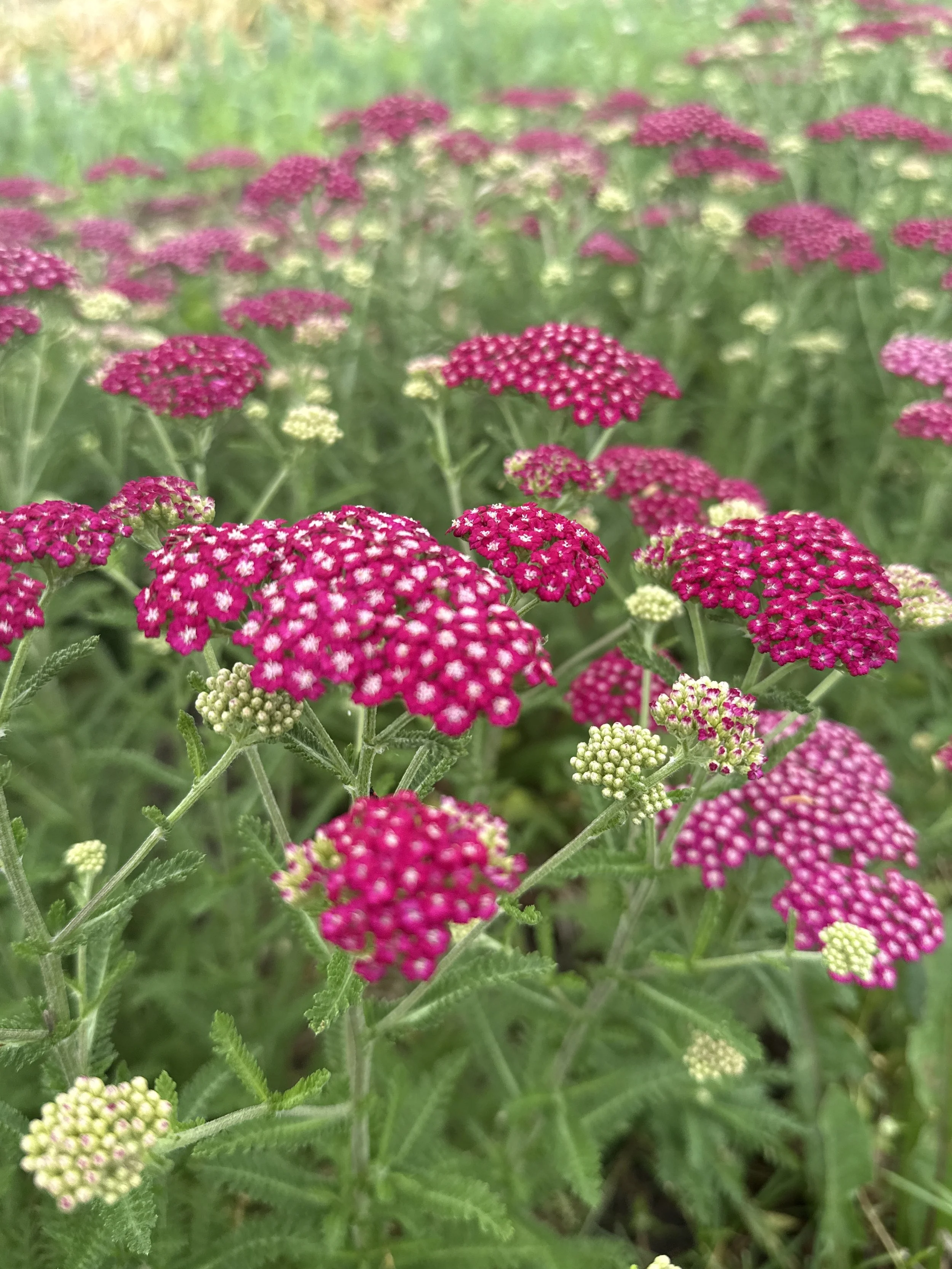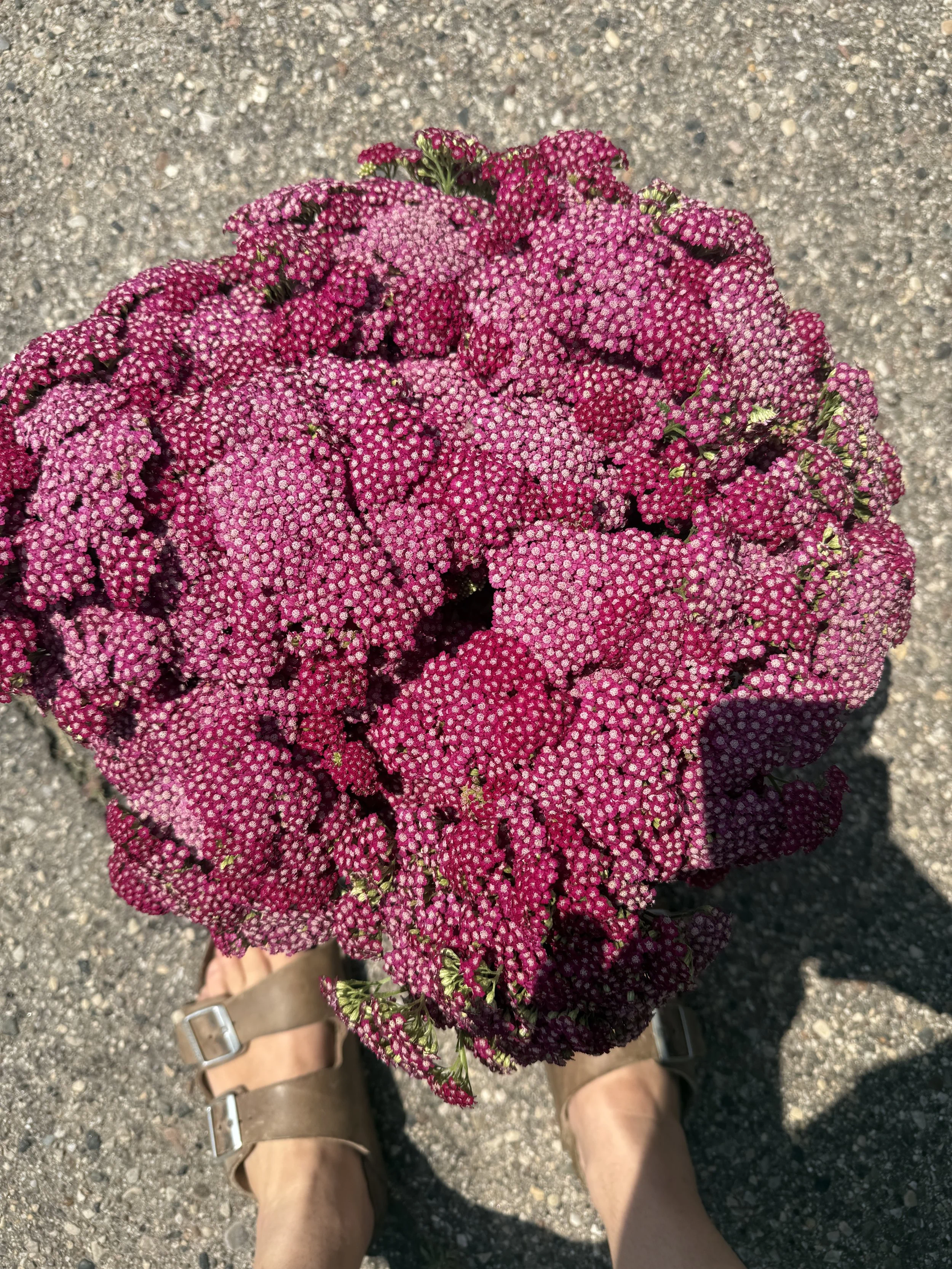Yarrow: The Unsung Hero of my Flower Farm
Why I Love Growing Yarrow
If you're looking for an easy-to-grow perennial that thrives in tough conditions and keeps your florist customers happy, yarrow checks every box. It's one of the best perennial filler flowers for cut flower farms—hardy, productive, and always in demand.
On my flower farm, yarrow might not be the flashiest crop, but year after year, it quietly earns its place as one of the most reliable and profitable crops I grow because it is easy to grow and easy to sell. That combination makes it one of the most profitable and low-maintenance crops I grow. After six years with yarrow, it continues to earn its place season after season.
Yarrow Sales in 2024
In 2024 alone, I sold over 1,500 stems, making yarrow my fifth top-selling flower. Its vibrant color range, resilience, and steady demand from florists make it a must-have. In this post, I’m sharing why I love yarrow, how I grow it, and tips for making it work on your own flower farm.
Why Florists Love Yarrow
Florists consistently order yarrow. One wedding florist ordered 50 bunches for a single event last year! My regular shops use between 4–8 bunches weekly. Yarrow is known as a “filler flower,” used to fill out bouquets and add texture without overwhelming the design—or the budget.
Recently, I heard Ellen Frost of Local Color Flowers talk about the need for more local filler flowers. Many growers focus on showstoppers like dahlias or lisianthus, but florists also need the everyday workhorse crops. Yarrow fits that role beautifully.
Yarrow’s Stunning Color Range
Beyond its usefulness, yarrow brings color diversity. From soft pastels to deep berry tones, it offers shades for nearly any palette. I’m always adding new varieties. This year, ‘New Vintage Violet’—a bold fuchsia—was a huge hit with florists.
Just yesterday, I picked up three new varieties from Walters Gardens. I’m most excited about ‘Firefly Peach Sky,’ a peachy-salmon shade I’ve heard great things about from other growers. I can’t wait to see it bloom.
How to Grow Yarrow on Your Flower Farm
Also known as Achillea, yarrow is incredibly easy to grow. It thrives in full sun, zones 3–8, and once established, is drought-tolerant. It attracts pollinators like bees and green lacewings. Pest pressure is low—I've only seen aphids once, and even then, they weren’t a big issue.
Yarrow is a first-year flowering perennial. That means if you start it indoors in February or March, it will bloom by June or July. And it just gets better with age—peaking in years two and three.
Treating Yarrow as a Short-Lived Perennial
On my farm, yarrow is really beautiful and productive in years two and three. That’s when you get big blooms, strong stems, and great vigor. By year four, though, plants start declining—smaller flower heads, less energy. So at the end of year three, I either dig and divide the bed to reduce overcrowding, or I usually just till the bed under and start over if it's a seed-propagated variety.
I plant in both fall and spring to stagger bloom times and keep supply steady.
Yarrow also readily self-seeds itself all over your garden, your property, the neighbor’s property… you get the idea. I actually don’t mind this. While I do pull yarrow from unwanted places, I also leave as much of it as possible to cut from and enjoy myself. But be warned—it does spread.
Harvesting Yarrow
When the flower bed is just coming into bloom, I harvest stem by stem. But once a bed is in full bloom, I switch to using a sickle for bulk harvest, then grade and bunch in the garage.
Important tip: Timing matters. Yarrow must be harvested when all the florets on a stem are open. If the bloom is not mature it will wilt. If side shoots are underdeveloped, I just strip them off to prevent wilting.
Wait too long, though, and yarrow starts to look seedy and tired. Harvesting at the right stage is key for vase life. I also recommend using a holding solution like Chrysal Professional #2.
Sorting Yarrow for Florist Orders
Recently, I started separating colors in my Colorado Mix plantings. Florists love being able to request specific shades like blush or pale yellow. I’ve also started making “neutral” bunches (blush, pale yellow, white) and “bold” bunches (deep pinks), which have been very popular and easy to organize post-harvest.
Want to start selling your flowers to florists — but don't know where to begin?
Grab my FREE guide with tips to help you build real and lasting relationships with florists so you can confidently sell your flowers.
Join the 750+ flower farmers who’ve already downloaded it.
Avoiding Short Varieties
Not all yarrow is created equal! I once bought a terracotta-colored variety that never topped 10 inches—even though the tag claimed 18 inches. I pulled the whole bed. Don’t settle for short stems—there are plenty of tall varieties out there.
My Favorite Yarrow Varieties
From seed:
Colorado Mix – A staple blend of pinks, peaches, and neutrals
New Vintage Violet – Bright fuchsia; a standout this year
Summer Berries – Rich berry tones, another reliable seed-grown mix
From cuttings (not seed-grown): 3 new varieties I’m adding this summer
Firefly Peach Sky – Salmon-peach mix
Firefly Sunshine – Cheerful yellow
Firefly Diamond – White
All three are sourced from Walters Gardens (Zeeland, MI). They’re tall, and I know other flower farmers who have grown them. I’ll report back next year on how they perform.
Key Takeaways for Flower Farmers
Yarrow is easy to grow, harvest, and sell
Filler flowers are essential for your farm and your florist clients
Replace beds every 3 years or divide for continued performance
Always confirm stem height before purchasing new varieties
So that’s why yarrow is one of my favorite flowers on the farm. If you’re a no-fuss, high-profit kind of grower, I can’t recommend it enough. And if you’ve got a favorite yarrow variety, please tell me—I’m a bit of a collector and always on the hunt for great ones!
Stay rooted,
Ruth Ann



